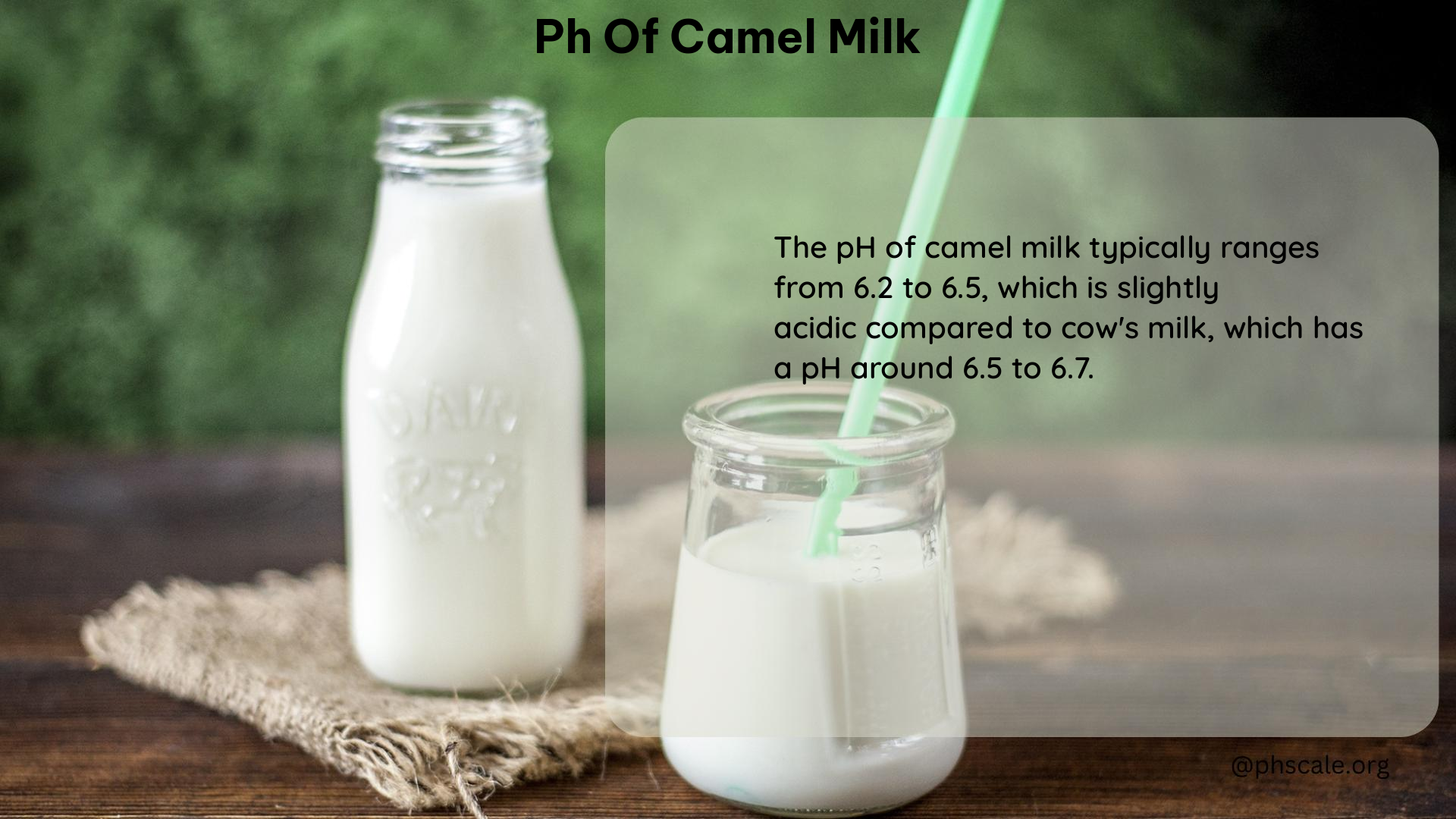The pH of camel milk is a crucial factor that contributes to its distinct characteristics and potential health benefits. Ranging from 6.2 to 6.54, with an average value of around 6.5, the pH of camel milk sets it apart from other dairy products, such as cow’s milk (pH = 6.79) and goat’s milk (pH = 6.7).
Understanding the pH of Camel Milk
Physicochemical Analysis
The pH of camel milk is measured using digital pH meters, and the titratable acidity is determined based on the methodology of the Association of Official Analytical Chemists (AOAC). This precise analysis provides valuable insights into the unique properties of camel milk.
Seasonal Variations
The pH and other components of camel milk can vary depending on the season, with lower values observed during the summer period. This seasonal fluctuation is likely influenced by factors such as the type of feed, water availability, and environmental conditions.
Comparison to Other Milks
Camel milk’s slightly higher pH compared to cow’s and goat’s milk is a notable characteristic. This difference can be attributed to the unique composition and metabolic processes of camels, which contribute to the milk’s distinct properties.
Factors Influencing the pH of Camel Milk

Stage of Lactation
The stage of lactation can have a significant impact on the pH of camel milk. As the lactation period progresses, the pH may fluctuate, reflecting the changes in the composition and metabolic processes within the camel’s body.
Dietary Factors
The type of feed and water consumed by the camels can also influence the pH of their milk. Proper feeding and hydration conditions are essential for maintaining the optimal pH range.
Climatic Conditions
Environmental factors, such as temperature and humidity, can also play a role in the pH of camel milk. Extreme climatic conditions may lead to variations in the milk’s composition and, consequently, its pH.
Nutritional Significance of Camel Milk’s pH
Antidiabetic Properties
Camel milk’s unique pH range has been associated with its potential antidiabetic properties. Studies have suggested that the pH of camel milk may contribute to its ability to regulate blood sugar levels and improve insulin sensitivity.
Anti-Autistic Effects
The pH of camel milk has also been linked to its potential benefits for individuals with autism spectrum disorders. The milk’s composition and pH may have a positive impact on gut health and neurological function.
Antimicrobial and Antioxidant Capabilities
The pH of camel milk, along with its other bioactive compounds, has been shown to exhibit antimicrobial and antioxidant properties. These characteristics can contribute to the milk’s ability to protect against various infections and oxidative stress.
Maintaining the pH of Camel Milk
Home Remedies
In some cases, adjusting the pH of camel milk may be necessary. Simple home remedies, such as adding a pinch of baking soda or lemon juice, can help balance the pH if needed.
Proper Feeding and Hydration
To ensure the optimal pH of camel milk, it is essential to maintain proper feeding and hydration conditions for the camels. This includes providing a balanced diet and ensuring access to clean water.
Conclusion
The pH of camel milk is a crucial factor that sets it apart from other dairy products. Its unique pH range, typically between 6.2 and 6.54, contributes to the milk’s superior nutritional quality and potential health benefits. Understanding the factors that influence the pH of camel milk, as well as the strategies for maintaining it, can help unlock the full potential of this remarkable dairy product.
References:
- Composition of Camel Milk and Evaluation of Food Supply for Camels (2019) – https://journalofethnicfoods.biomedcentral.com/articles/10.1186/s42779-019-0031-5
- Recent Advances on Camel Milk: Nutritional and Health Benefits and Processing Implications (2022) – https://www.aimspress.com/article/doi/10.3934/agrfood.2022048?viewType=HTML
- Physicochemical Quality of Camel Milk (ResearchGate) – https://www.researchgate.net/publication/237586369_PhysicoChemical_Quality_of_Camel_Milk
- Study of the Biochemical Biodiversity of Camel Milk (2019) – https://www.ncbi.nlm.nih.gov/pmc/articles/PMC6481029/
- Composition of Camel Milk (FAO) – https://www.fao.org/4/X6528E/X6528E03.htm
